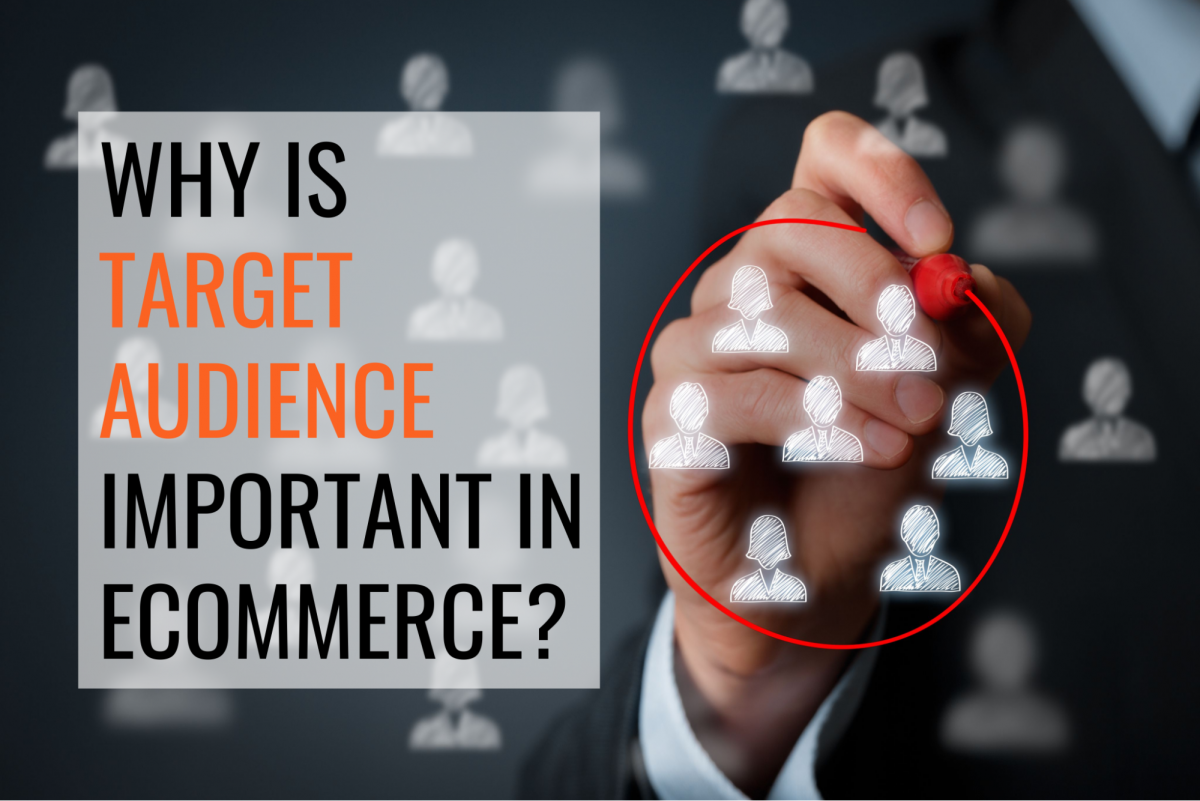Think fast: who’s your target audience—the main customers who will be buying your product?
While we want to believe that our product or service can be used by everybody, marketing to a wide audience isn’t the best way to draw in new customers for your ecommerce business.
Narrowing down your target audience may sound like you’re giving up a large piece of the pie and saying no to more revenue, but nothing is further from the truth. In fact, failing to have a target audience is something that could quickly drive many companies out of business. It could easily inflate your advertising and customer acquisition costs, and people will find it hard to stay loyal to your brand if they feel like it doesn’t resonate with them.
Instead of trying to sell to everyone, businesses should focus on finding their exact audience. This group of ideal customers is more likely to value your products, make repeat purchases, and recommend your small business to other people.
Ready to find your target audience for your business? In this article, I’ll dive further into why you need a target audience. I’ll also share six questions that will help define your target audience, plus some strategies to help you reach them.
What Is a Target Audience?
First up, what exactly does a target audience look like, anyway?
A target audience is a group of people who are likely to be interested in your product or service. It’s the specific group of people that you target wit your digital marketing efforts. A target audience is usually defined by data such as age, gender, location, educational background, social class, purchasing power, and purchasing habits.
In addition to target market, you’ll also hear the terms target market and customer persona. Let’s talk about the differences between the three.
A target market is a large group of consumers who share similar characteristics or interests that make them more likely to purchase certain products or services. Target markets are the intended end-users of a product or service.
On the other hand, a target audience is usually smaller than a target market. They’re the ones that your individual campaign is intended for.
Buyer personas are an even more specific subset of your target market Also called a customer persona, these are avatars or profiles of your ideal customers. While a target market considers the whole audience in a general manner, buyer personas are grouped according to very specific characteristics. Creating a buyer persona requires you to do more data collection and dig deeper into your target markets.
(Source: Rock Content)
Why Is a Target Audience Important for an Ecommerce Business?
Getting quality leads from mass marketing is challenging. You reach more people and get more traffic, but they’re not likely to interact or buy from your business because they aren’t your ideal customer. When you market to a target audience, you won’t have to waste time sifting through irrelevant traffic in order to connect with ideal customers.
Having a target audience also helps you to:
Run Cost-efficient Marketing Strategies
When you know who you’re talking to, you can tailor-fit your digital marketing strategies to your intended audience. You can improve the visuals you choose, use the right language and tone, avoid what they don’t like, select appropriate packaging design, and personalize the promotions that you offer. You also reach them faster by selling and advertising on the right communication channels.
Improve Your Products
Marketing expert Peter Drucker said that the aim of marketing is “to know and understand the customer so well the product or service fits him and sells itself.” Knowing your customers help you understand their challenges, desires, and goals. This kind of empathy for your target audience helps you come up with products and services that they really need.
Increase Revenue
Ninety-one percent of customers say they prefer to shop from brands that provide relevant offers and recommendations. Having a target market allows you to connect with the right audience at the right time, helping you move customers through the sales funnel quickly.
How Do You Define Your Target Audience?
Start your target audience research with these six questions:
Who’s Your Current Audience?
The easiest way to look for your target audience is to look at who’s interacting with your business now. The profiles of your current customers give you insights into the specific traits of the particular audience you want to target. Your social media following, especially those who engage with your business, is also a good source of information.
Take note of:
- Demographics like age, gender, location, social background, interests, etc.
- Purchase history and consumer behavior
- Website behavior on Google Analytics
- Types of content they interact with
Don’t have existing customers? Conduct market research surveys on your own using tools like Survey Monkey or Google Forms. Industry publications and newsletters also provide information on target customers and trends.
What Are Their Biggest Challenges, Problems, Needs, and Desires?
People will buy a product or service to satisfy two needs:
- To avoid pain or loss
- To gain pleasure
Knowing your target audience’s pain points helps you see their struggles in a concrete way. The key thing here is to ask, don’t assume. What you might think is a pain point for them may not be one in reality.
Get our Why Is Target Audience Important In Ecommerce - Worksheet delivered right to your inbox.
Here’s how you can get specific details on their pain points:
- Do social listening online and engage in Facebook groups and forums in your niche. Remember that at this stage, just ask and observe.
- Look at your competitors’ websites and copy for clues. What customer problems are they trying to address? What type of solutions are they offering? Take a look at product reveiws on places like Amazon. Sort the reviews so that the one-star reviews come up first. Find out what issues the customers are having with the competitor’s product.
- Run surveys with open-ended questions that allow consumers to answer in detail. You can use questions like:
What product or service are you currently using?
How satisfied are you with it?
If you could change one thing about the product or service, what would it be and why?
What Problem Does Your Product or Service Solve?
1950s ad-man Howard Luck Gossage has great advice that’s still true today: “Nobody reads advertising. People read what interests them, and sometimes it’s an ad.”
Think about why your target audience should choose your product or service among all the others out there. Will it make their lives easier? Will it make them feel good about themselves? You should be able to identify your unique selling point or the thing that makes your product or service more attractive than others.
Standing out from the competition is easier if you’re able to figure out your competitive advantage and communicate it clearly as a benefit to your target audience.
Check out this example from BrüMate, a company that makes insulated coolers and tumblers. It was initially a male-oriented brand with very masculine visuals and messaging. After doing research, they found that women between 33-55 were a viable target audience, as they liked gifting BrüMate products to other people.
With some changes to their product packaging and marketing, they were able to tap into a new target audience, leading to over $20 million in extra sales the next year.
(Source: BrüMate)
(Source: BrüMate)
What Puts Them Off?
Knowing what your target audience doesn’t like is as powerful as knowing what they do like. Think about what type of language, visuals, or associations they don’t like, and avoid these in your marketing campaign.
Where Do They Seek Information?
What platforms does your target audience use to look for information? Knowing this allows you to create content and ads that they respond to. For example, short-form videos are extremely popular with younger audiences. If you’re targeting the Gen Z crowd, you should make this type of content and post it on social media sites like TikTok or Instagram.
Who Do They Trust?
Nobody buys a product or service from a company they don’t know, like, or trust. We know how social proof can do wonders for a business, but knowing exactly what kind of social proof your target audience needs levels up your strategy. For example, a SaaS (software as service) or B2B’s (business to business) target audiences are usually other businesses or organizations.
You’ll often see in-depth case studies and longer testimonials on their websites. Longer reviews provide potential customers with all the information and confidence they need before paying premium prices for a product.
FAQs on Target Audiences for Ecommerce
Here are some frequently asked questions about target audiences for ecommerce businesses:
What is a target audience and what is its importance in communication?
A target audience is a specific group of people that can benefit from a company’s product or service and has significant potential to respond positively to a marketing message. When businesses come up with clearly-defined target audiences, they can communicate effectively with their ideal customers.
What is a target audience example?
Let’s say your online store sells affordably-priced video gaming accessories. After doing some research, you’ve come to the conclusion that your target audience is male, aged 18-35, living in the U.S., and new to gaming. He spends most of his free time trying out video games and prefers to play them on a desktop. Keep in mind that this is a very broad, very simplified target audience example. In most cases you’ll want to get much more detailed.
What is the target market of Amazon?
Thinking of opening an Amazon storefront? Amazon’s target market is primarily middle and upper-class consumers, evenly split between male and female, with an average age of 18-44. More than half of its customers are in the U.S.
The Next Steps: Strategies to Reach Your Target Audience
Now that you’ve identified the right target audience, how do you reach them? Here are some strategies you can use right away:
Step One: Use Facebook and Instagram Ads
While you can (and should still) grow your audience organically by posting regularly or running contests, investing in paid ads can be a cost-effective way to find your target audience and improve your conversion rates fast.
Facebook’s advanced ad targeting identifies interested prospects and high-intent buyers and compiles them into user profiles that you can target when you create ads. Products can be matched to potential customers’ interests, demographic information, behavior, and other factors.
Step Two: Create A Blog and Other Relevant Content
With a clearer picture of your ideal customer, it’s easier to create customized content for them. Do keyword research and create blog posts, videos, or social media posts to draw in high-quality traffic and leads. Creating valuable content results in increased time spent on your site and establishes you as an authority in your niche.
Step Three: Work with Influencers
One advantage of knowing your target audience is that it’s easier to choose the right influencers to work with. Influencers are people who have built a strong following and trusted reputations in a certain niche. By tapping into an influencer’s social media audience, you can quickly find your target audience. Influencer marketing is still an effective strategy in 2022, with 51% of marketers seeing a positive effect on their brand and sales.
Ecommerce entrepreneurs have to understand that not everyone is a target customer and not everyone will be interested in your product. Focusing on the right audience strengthens your brand image and helps you allocate precious ad dollars to market segments that will yield more returns.
Reaching out to a specific audience also helps you build long-lasting relationships with customers who will not only buy from you, but often will go on to do repeat business with you as well.
Looking for a marketing strategy that will help you to scale your online business? Reach out now for your free 20-minute consultation. Let’s find solutions that will help your business grow, fast.
Get our Why Is Target Audience Important In Ecommerce - Worksheet delivered right to your inbox.







